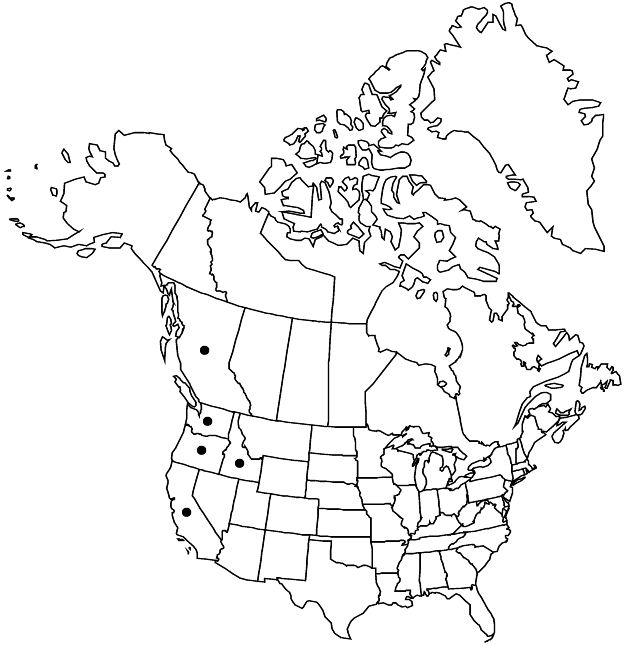Cornus nuttallii
Ornithol. Biogr. 4: 482. 1838. (as nuttalli)
Shrubs or trees to 20 m, flowering at 2 m. Stems clustered, bark forming square to rectangular plates 0.5–1 cm wide; branchlets green, maroon, or dark red, appressed-hairy; lenticels pale round or lenticular spots, with dark central pore. Leaves: petiole 5–17 mm; blade elliptic, ovate, or obovate, 6–15 × 3–9.5 cm, base broadly cuneate, apex short acuminate, abaxial surface pale green, appressed-hairy, tufts of erect hairs present in axils of secondary veins, adaxial surface yellow green, appressed-hairy; secondary veins 4–6 per side, most arising from proximal 1/2. Inflorescences convex, 1.5–3 cm diam., 40–75-flowered, subtended by pair of reduced leaves and pair of cataphylls; peduncle 40–60 mm; petaloid bracts 4–6, surrounding but not enclosing inflorescence through winter, white or tinged with pink, rhombic to obovate, 2.5–7 × 1.7–6 cm, apex short acuminate. Flowers: hypanthium appressed-hairy; sepals 1–1.5 mm; petals cream or yellow-green, rarely purple distally, 3–4 mm. Drupes red, closely appressed to each other, angular in cross section, 10–17 × 5–7.5 mm; stone ellipsoid, 7–9 × 4–5 mm, smooth. 2n = 22.
Phenology: Flowering Apr–Jul, sometimes Sep–Oct; fruiting Aug–Oct.
Habitat: Dry to moist coastal coniferous and montane forests.
Elevation: 0–2400(–3000) m.
Distribution

B.C., Calif., Idaho, Oreg., Wash.
Discussion
Selected References
None.